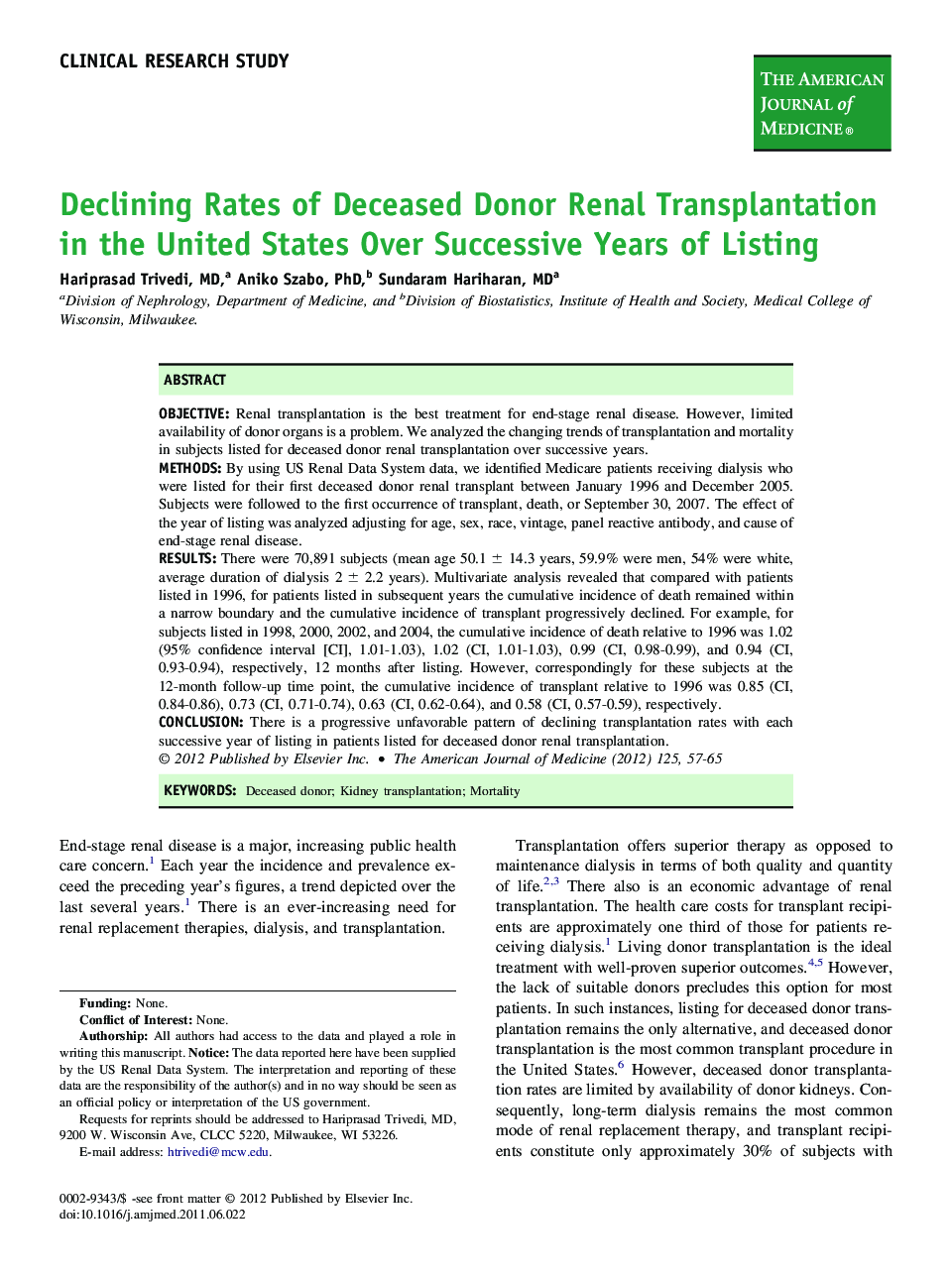| Article ID | Journal | Published Year | Pages | File Type |
|---|---|---|---|---|
| 2716519 | The American Journal of Medicine | 2012 | 9 Pages |
ObjectiveRenal transplantation is the best treatment for end-stage renal disease. However, limited availability of donor organs is a problem. We analyzed the changing trends of transplantation and mortality in subjects listed for deceased donor renal transplantation over successive years.MethodsBy using US Renal Data System data, we identified Medicare patients receiving dialysis who were listed for their first deceased donor renal transplant between January 1996 and December 2005. Subjects were followed to the first occurrence of transplant, death, or September 30, 2007. The effect of the year of listing was analyzed adjusting for age, sex, race, vintage, panel reactive antibody, and cause of end-stage renal disease.ResultsThere were 70,891 subjects (mean age 50.1 ± 14.3 years, 59.9% were men, 54% were white, average duration of dialysis 2 ± 2.2 years). Multivariate analysis revealed that compared with patients listed in 1996, for patients listed in subsequent years the cumulative incidence of death remained within a narrow boundary and the cumulative incidence of transplant progressively declined. For example, for subjects listed in 1998, 2000, 2002, and 2004, the cumulative incidence of death relative to 1996 was 1.02 (95% confidence interval [CI], 1.01-1.03), 1.02 (CI, 1.01-1.03), 0.99 (CI, 0.98-0.99), and 0.94 (CI, 0.93-0.94), respectively, 12 months after listing. However, correspondingly for these subjects at the 12-month follow-up time point, the cumulative incidence of transplant relative to 1996 was 0.85 (CI, 0.84-0.86), 0.73 (CI, 0.71-0.74), 0.63 (CI, 0.62-0.64), and 0.58 (CI, 0.57-0.59), respectively.ConclusionThere is a progressive unfavorable pattern of declining transplantation rates with each successive year of listing in patients listed for deceased donor renal transplantation.
